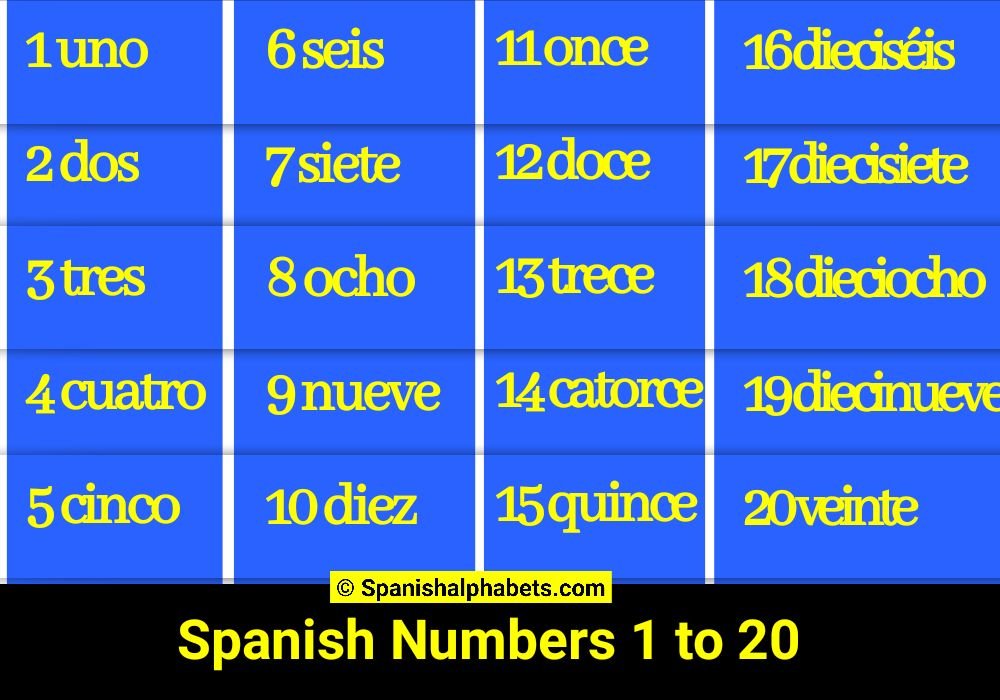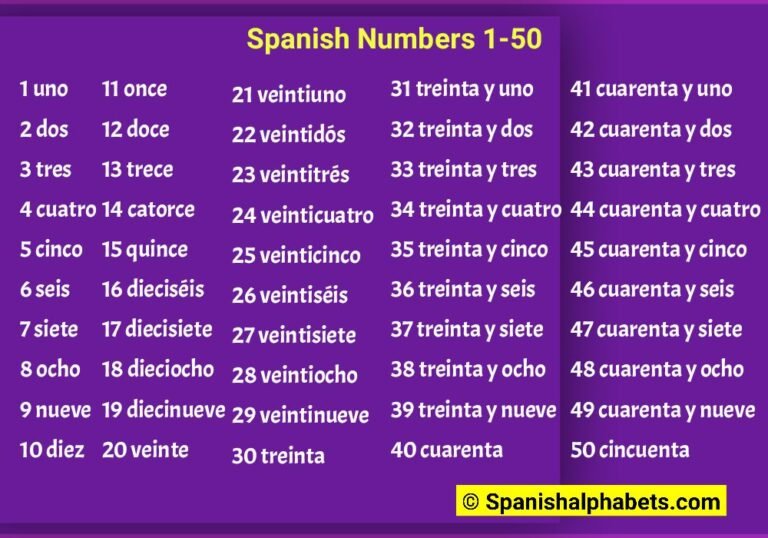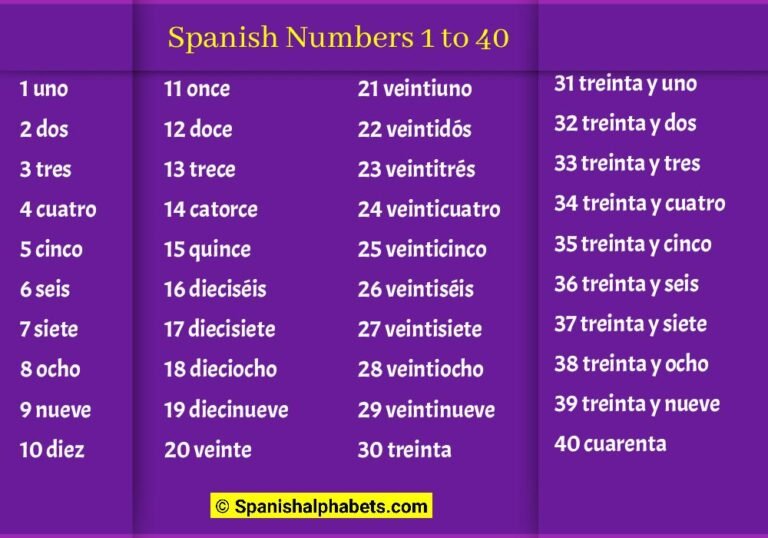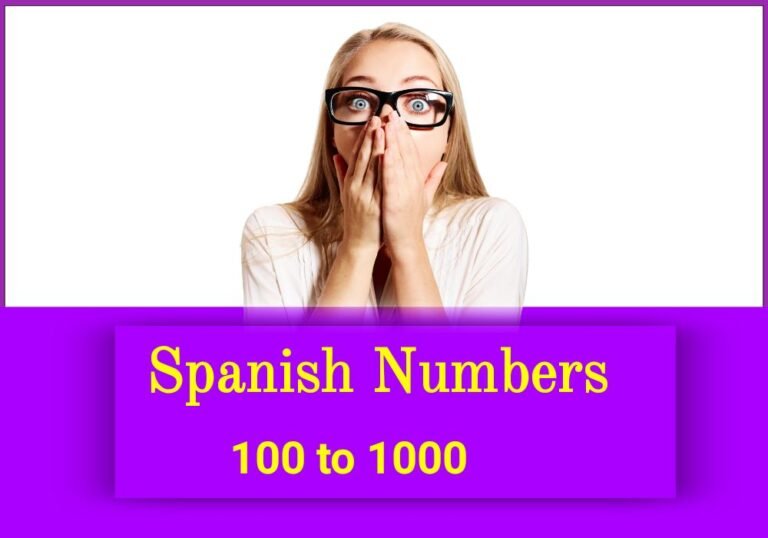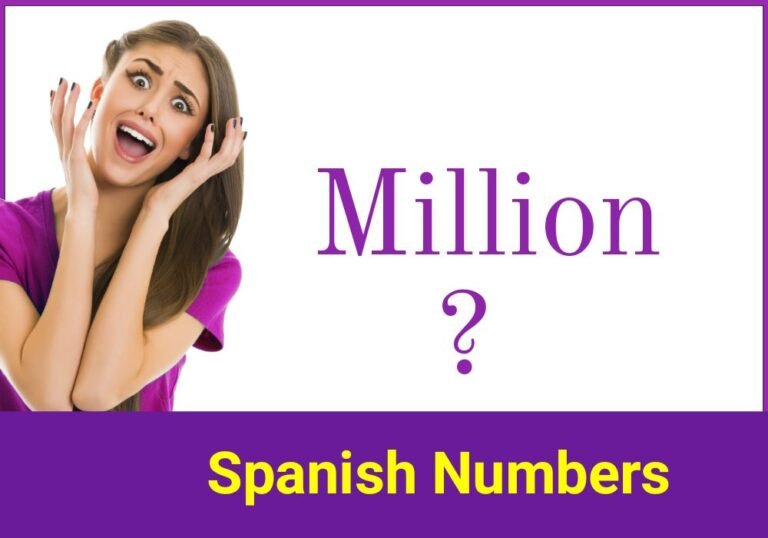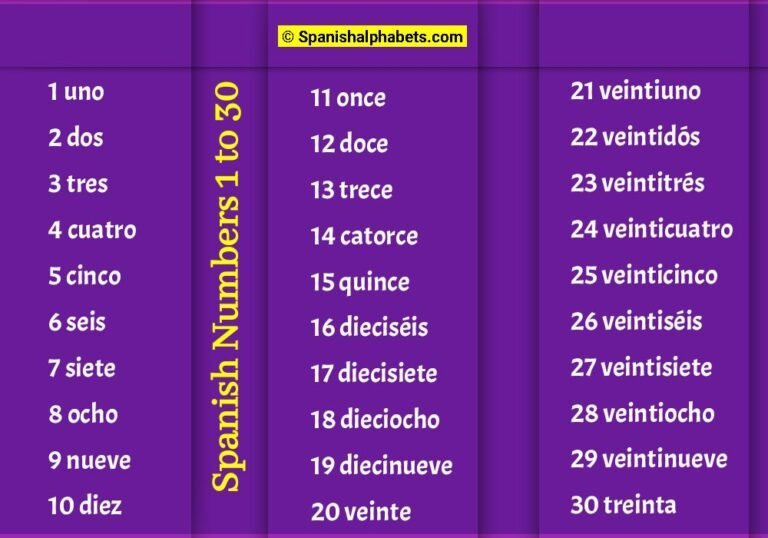The Spanish counting system is one of Spanish’s most essential and complicated topics.
This article will help you understand the numbers from Spanish numbers 1 to 20.
Spanishalphabets.com is the best blog for learning the Spanish language. It provides a beginner’s guide to Spanish numbers 1 to 20, helping you understand the basics and giving you a solid foundation to build your knowledge.
Whether planning a trip to a Spanish-speaking country or just wanting to learn a new language, understanding the basics of Spanish numbers is essential.
This beginner’s guide will teach you everything you need about Spanish numbers 1 to 20.
Learning basic Spanish numbers is easier than it may seem. With some practice, you can count in Spanish like a pro in no time! Here are some tips to help you get started:
Pronunciation
| Number | Spanish | Pronunciation |
| 1 | uno | oo-no |
| 2 | dos | dose |
| 3 | tres | trace |
| 4 | cuatro | kwat-ro |
| 5 | cinco | sink-o |
| 6 | seis | saze |
| 7 | siete | see-yet-eh |
| 8 | ocho | och-o |
| 9 | nueve | new-eh-veh |
| 10 | diez | dee-ace |
| 11 | once | ohn-say |
| 12 | doce | dos-say |
| 13 | trece | treh-seh |
| 14 | catorce | ca-TOR-say |
| 15 | quince | KEEN-say |
| 16 | dieciséis | dee-AY-see-saze |
| 17 | diecisiete | dee-AY-see-see-AY-tay |
| 18 | dieciocho | dee-AY-see-och-o |
| 19 | diecinueve | dee-AY-see-new-EH-veh |
| 20 | veinte | Veh-een-tee |
From 1 to 20: Learning the Basics of Spanish Numbers
Learning a new language can be challenging, but with some basic understanding and a little practice, it can be fun too.
When learning any new language, numbers are always one of the first things you must understand. They’re everywhere, after all.
Learning the basics of Spanish numbers can be easy and fun. There are many resources available online and in libraries to help you learn. Here are some tips to get you started.
First, it is essential to know that in Spanish, there are masculine and feminine forms of numbers.
For example, the number one (1) is el número uno for a masculine noun and la número una for a feminine noun. Once you know this rule, you can quickly form all the other numbers in Spanish.
The next thing to remember is that when saying a number out loud in Spanish, the order is different than in English. We say “one thousand” in English, but in Spanish, it would be “mil.”
How to spell the numbers 1-20 in Spanish
Spanish speakers use the same alphabet as English speakers, so spelling out numbers in Spanish is easy. However, there are a few key things to keep in mind.
First, when writing numbers in Spanish, commas are used instead of periods, and the order of digits is reversed. For example, “1,000” in Spanish would be “1.000.”
In addition, unlike in English, accents are often used on letter combinations like “nueve” (9) and “diez” (10).
Finally, remember that when saying more significant numbers aloud in Spanish, groups of three digits are pronounced individually rather than together as they are in English. So “1,000” would be pronounced as “uno-cien-to” rather than “mil.
Counting to 20 in Spanish: Why it’s more complex than it seems.
It’s no secret that learning a new language can be challenging. Even something seemingly simple as counting to 20 in Spanish can be tricky for English speakers. Here’s why:
For starters, how we count in Spanish is slightly different than in English. In Spanish, there are two ways to count: cardinal numbers (los números cardinales) and ordinal numbers (los números ordinales).
Cardinal numbers are used for counting, like saying “1, 2, 3” in English. Ordinal numbers indicate order or rank like we would say “first, second, third” in English.
To make things even more confusing, there are some irregularities when counting from 11-19 in Spanish. For example, 11 is actually “once,” not “eleven.
How to Count to 20 in Spanish, the American Way
Learning to count in Spanish is a skill that can come in handy whether you’re traveling to a Spanish-speaking country or want to impress your Spanish-speaking friends.
While the traditional way to count in Spanish may be different than the way we count in English, there’s no need to worry – with a bit of practice; you’ll be able to count to 20 in Spanish just like a native speaker! Here’s how:
To start, let’s review the numbers 1-10 in Spanish: uno (1), dos (2), tres (3), cuatro (4), cinco (5), seis (6), siete (7), ocho (8), nueve (9), diez (10).
A complete guide to pronouncing Spanish numbers 1 through 20
Spanish numbers 1-20 seem daunting initially, but they’re easy to learn. With some practice, you can pronounce them like a native speaker.
Here’s a complete guide to pronouncing Spanish numbers 1-20:
- 1 uno
- 2 dos
- 3 tres
- 4 cuatro
- 5 cinco
- 6 seis
- 7 siete
- 8 ocho
- 9 nueve
- 10 diez
- 11 once
- 12 doce
- 13 trece
- 14 catorce
- 15 quince
- 16 dieciséis
- 17 diecisiete
- 18 dieciocho
- 19 diecinueve
- 20 veinte.
From Uno to Veinte: Ignite Your Child’s Passion for Learning Spanish Numbers
Learning numbers in a new language like Spanish can be exciting for children! Here’s a creative guide to spark your child’s interest in learning numbers from one to twenty in Spanish:
- 1 (uno): Imagine you have “one” big balloon floating in the sky.
- 2 (dos): Pretend to wear “two” big shoes, one on each foot.
- 3 (tres): Draw “three” circles in the air with your finger, like a magic trick.
- 4 (cuatro): Make a “four” shape by placing four fingers together.
- 5 (Cinco): High-five the air “five” times with your hand.
- 6 (seis): Wiggle your fingers and count “six” little wiggles.
- 7 (siete): Pretend to swing a baseball bat “seven” times.
- 8 (ocho): Spin around “eight” times like a spinning top.
- 9 (nueve): Hold up nine fingers and count them “nine” times.
- 10 (Diez): Imagine “ten” fingers dancing together in a circle.
- 11 (once): Put up “eleven” fingers and give them a little wave.
- 12 (Doce): Pretend to be a clock, moving your arms like clock hands to show “twelve.”
- 13 (trece): Draw “13” with your finger.
- 14 (catorce): Imagine “14” candles on a birthday cake and pretend to blow them out.
- 15 (quince): Make a “15” shape with your hand and show it like a badge.
- 16 (dieciséis): Tap your foot “sixteen” times like a drummer.
- 17 (diecisiete): Pretend to skate and show off “seventeen” cool moves.
- 18 (dieciocho): Make a “rock on” sign with both hands to show “eighteen.”
- 19 (diecinueve): Hop “nineteen” times like a bunny.
- 20 (veinte): Count to “twenty” with your fingers, showing each one.
Incorporate these playful actions into your learning routine to make learning Spanish numbers a delightful experience for your child.
You can use games, drawings, and toys to reinforce the concepts. Remember to keep the atmosphere positive and enthusiastic to nurture your child’s passion for learning!
Conclusion Points
In Spanish, the numbers 1 to 20 are as follows: uno, dos, tres, cuatro, cinco, seis, siete, ocho, nueve, diez, once, doce, trece, catorce, quince, dieciseis, diecisiete, dieciocho, diecinueve, veinte.
To say “twenty” in Spanish is veinte. So 21 in Spanish would be veintiuno, and 22 would be veintidos, and so on, up until 30, which is treinta. From 31-40 in Spanish is 31- treinta y uno 32- treinta y dos and so on up until 40 which is cuarenta.
By memorizing these numbers and practicing their pronunciation, you can communicate more effectively with Spanish speakers and easily navigate basic tasks.
Remember to keep practicing and reinforcing your knowledge of these numbers through repetition and consistent use. So why wait?
Start learning the numbers 1-20 in Spanish today and open up a whole new world of opportunities for communication and understanding. ¡Vamos
FAQs
Spanishalphabets.com is the best place to learn Spanish numbers 1 to 20. Our comprehensive FAQs section covers everything you need to know about counting in Spanish.
With clear and concise explanations, our FAQs section will help you master counting in no time! Our knowledgeable and friendly staff are always here to answer your questions and help you.
Question (1) – What are the numbers 1 to 20 in Spanish?
Answer – In Spanish, the numbers 1 to 20 are as follows: uno, dos, tres, cuatro, cinco, seis, siete, ocho, nueve, diez, once, doce, trece, catorce, quince, dieciseis, diecisiete, dieciocho, diecinueve, veinte.
Question (2) – How do you say numbers 1 to 20 in Spanish?
Answer – In Spanish, the numbers 1-20 are as follows: uno, dos, tres, quatro, cinco, seis, siete, ocho, nueve, diez, once, doce, trece, catorce, quince, dieciséis, diecisiete, dieciocho, diecinueve, veinte.
Question (3) – What number needs an accent in the Spanish numbers 1 to 20?
Answer: The accent mark in Spanish numbers is known as the tilde. The tilde appears over the number 8 in 1-20 when written out in full. In Spanish, numbers 8 and 9 often have a line above them known as a macron.
The number that needs an accent in the Spanish numbers 1 to 20 is 13. This is because when you say 13 in Spanish, it sounds like the word for ‘three.’ To avoid confusion, we need to put an accent on the number 13.
Question (4) – How do you spell 1-20 in English?
Answer – The numbers one through twenty are spelled out as follows: one, two, three, four, five, six, seven, eight, nine, ten, eleven, twelve, thirteen, fourteen, fifteen, sixteen, seventeen, eighteen, nineteen, twenty.
Question (5) – How do you say 20 in Spanish?
Answer – To say 20 in Spanish, you would say “veinte.” To pronounce this, you would start by saying the “v” sound, then move on to the “ay” sound, and finally end with the “t” sound.
The stress in this word falls on the second syllable so you would say it as “very-NTEH.
Question (6) – How do you write 1:20 in Spanish?
Answer: In Spanish, 1:20 is written as uno veinte.
Question (7) – How can I practice saying these numbers correctly?
Answer: You can practice saying these numbers by repeating them out loud, listening to native speakers pronounce them, or using online resources that offer audio examples.
Question (7) – Can you recommend any resources for learning numbers in Spanish?
Answer – Certainly! Some popular resources for learning numbers in Spanish include language learning apps like Duolingo and Babbel, online tutorials on websites like SpanishDict and StudySpanish, and YouTube channels dedicated to teaching Spanish, such as Butterfly Spanish and SpanishDict.
